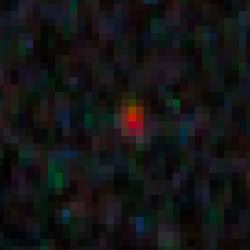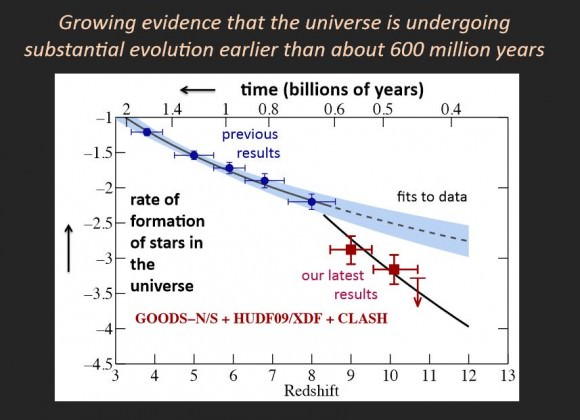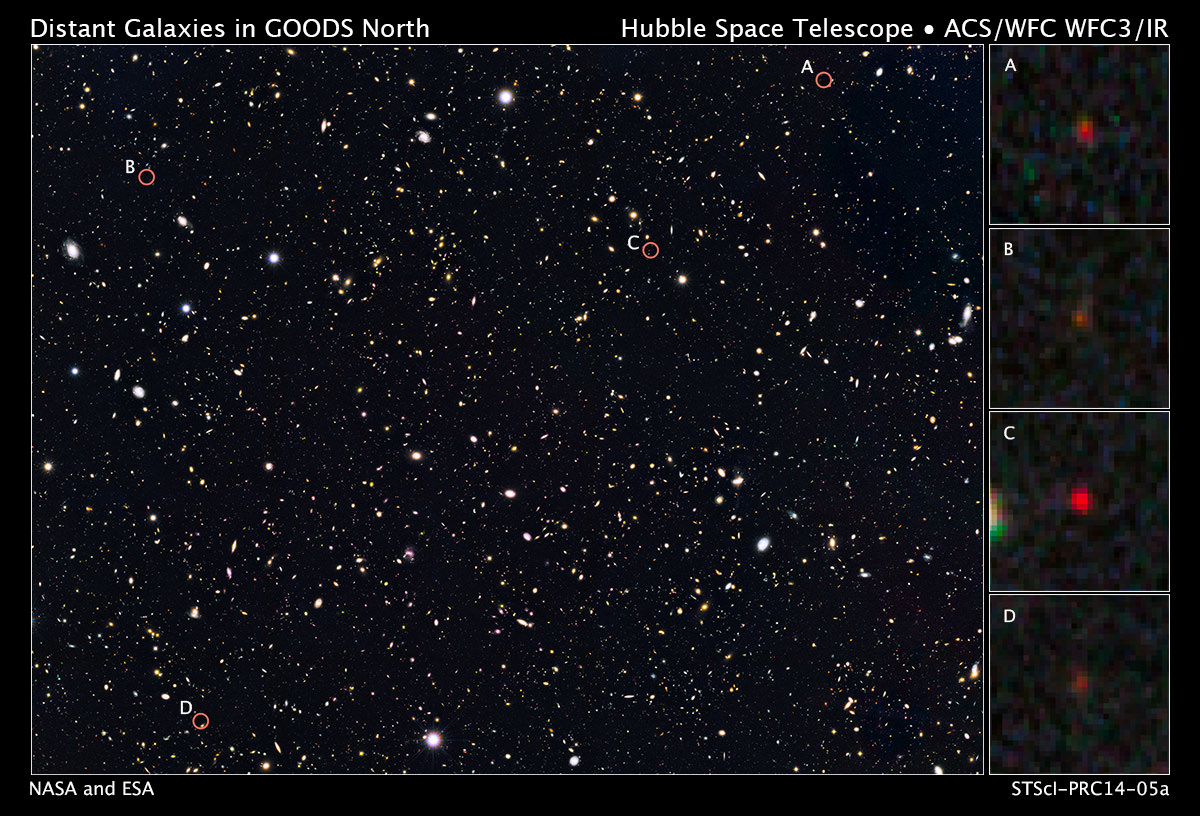What was the Universe like more than 13 billion years ago, just 500 million years after the big bang? New data from the Hubble and Spitzer space telescopes reveal some surprisingly bright galaxies that are about 10 to 20 times more luminous than anything seen previously in that epoch.
Garth Illingworth from the University of California, Santa Cruz said the discovery of these four bright galaxies came from combining the power of both telescopes, but these galaxies lie right at the limit of the telescopes’ capabilities.
“We’re actually reaching back 13.2 billion years through the life of the Universe — that’s 96% of the life of the Universe that we are looking back at these galaxies,” said Illingworth, speaking at the American Astronomical Society meeting in Washington D.C. this week. “That’s an astonishing undertaking and an astonishing accomplishment that Hubble and Spitzer have achieved.”

Illingworth said the typical galaxy candidate from that far back in time is very faint and hard to see. But these new galaxies are about 15-20 % brighter than what astronomers have seen before at redshift 10.
The tiny are bright because they are bursting with star formation activity. The brightest one is forming stars approximately 50 times faster than the Milky Way does today. Although these fledgling galaxies are only one-twentieth the size of the Milky Way, they probably contain around a billion stars crammed together.
Astronomers think these bright, young galaxies grew exceptionally fast because of interactions and mergers of smaller infant galaxies that started forming stars even earlier in the Universe. Since the ancient time billions of years ago when the light that we now see started its long journey to us, they have probably kept growing to become similar to the largest modern galaxies. Many of the stars of these infant galaxies likely live on today in the centers of giant elliptical galaxies, much larger even than our own Milky Way.

Illingworth said this era appears to be a timeframe where things were changing quite rapidly. “We’ve gone back to a very interesting time when the Universe is changing,” he said.
The galaxies were first detected with Hubble, and astronomers were able to measure their star-formation rates and sizes. But using Spitzer, the scientists were also able to measure the galaxies’ masses.
“This is the first-ever measurement of the mass density of the galaxies when the Universe was at 500 million years of age,” Illingworth said. “These galaxies are about a billion times the mass of our Sun, which is massive for those times, but still only 1% the mass of the Milky Way.”
Illingworth added that the mass measurements are rough estimates because of how challenging the task was.
Illingworth and team member Ivo Labbé from Leiden University said they are looking forward to finding out more about these galaxies, particularly from future observations with the upcoming James Webb Space Telescope.
“At the same time, the extreme masses and star formation rates are really mysterious,” Labbé said, “and we are eager to confirm them with future observations on our powerful telescopes.”
You can find out more about these early galaxies — and more — at the First Galaxies website.
Further reading: HubbleSite


Nancy
Do you have more info about the units for the vertical axis on the chart? The new results are more negative? wrt start formation than previous data fits would suggest.
My quick answer is to check out the First Galaxies website, where you can see Illingworth’s entire presentation: http://firstgalaxies.org/
James Webb Space Telescope! And a far side Lunar Crater Radio Telescope!
Every time we go deeper into the universe we get surprised at the results. Perhaps our understanding of red shift is incorrect. There are theories about matter having ‘intrinsic’ redshift. http://www.thunderbolts.info
“Theories crumble, but good observations never fade.” — Harlow Shapey
In observation of space horizon line, a Cosmic Spring emerged in dawn of time?
Glimpsed progenitor sunlight, seeds seasonal growth(?), tomorrow’s matured starlight?
“The history of astronomy is a history of receding horizons.” — Edwin Hubble
Into the future, an end may never come; but into the past, unseen beginning to plumb.
“Somewhere, something incredible is waiting to be known.” — Carl Sagan
(Quotes, above link)
I’m missing the link for printing this article.
Rene
If meaning was understood:
Quotes ( List seems to have disappeared. ) – http://firstgalaxies.org/
Press Release – http://hubblesite.org/newscenter/archive/releases/2014/05/full/